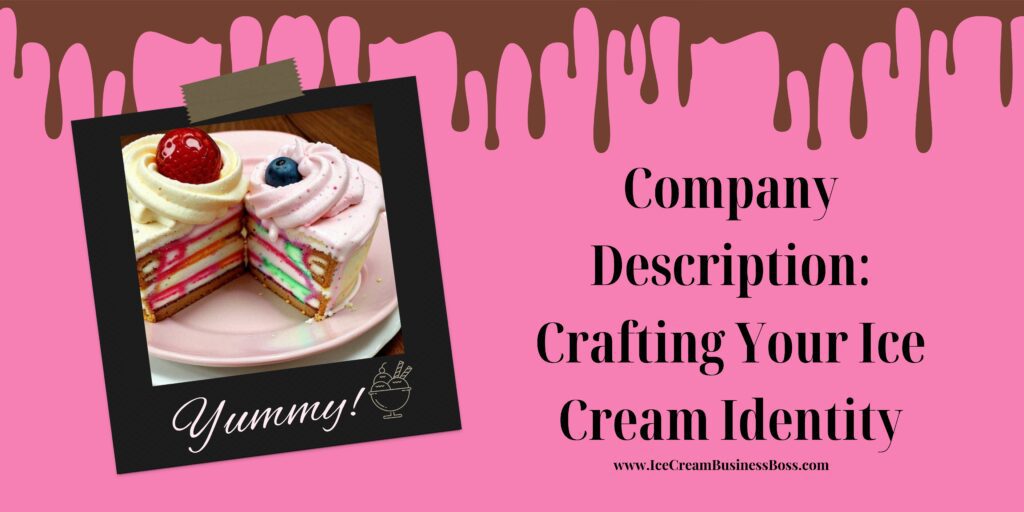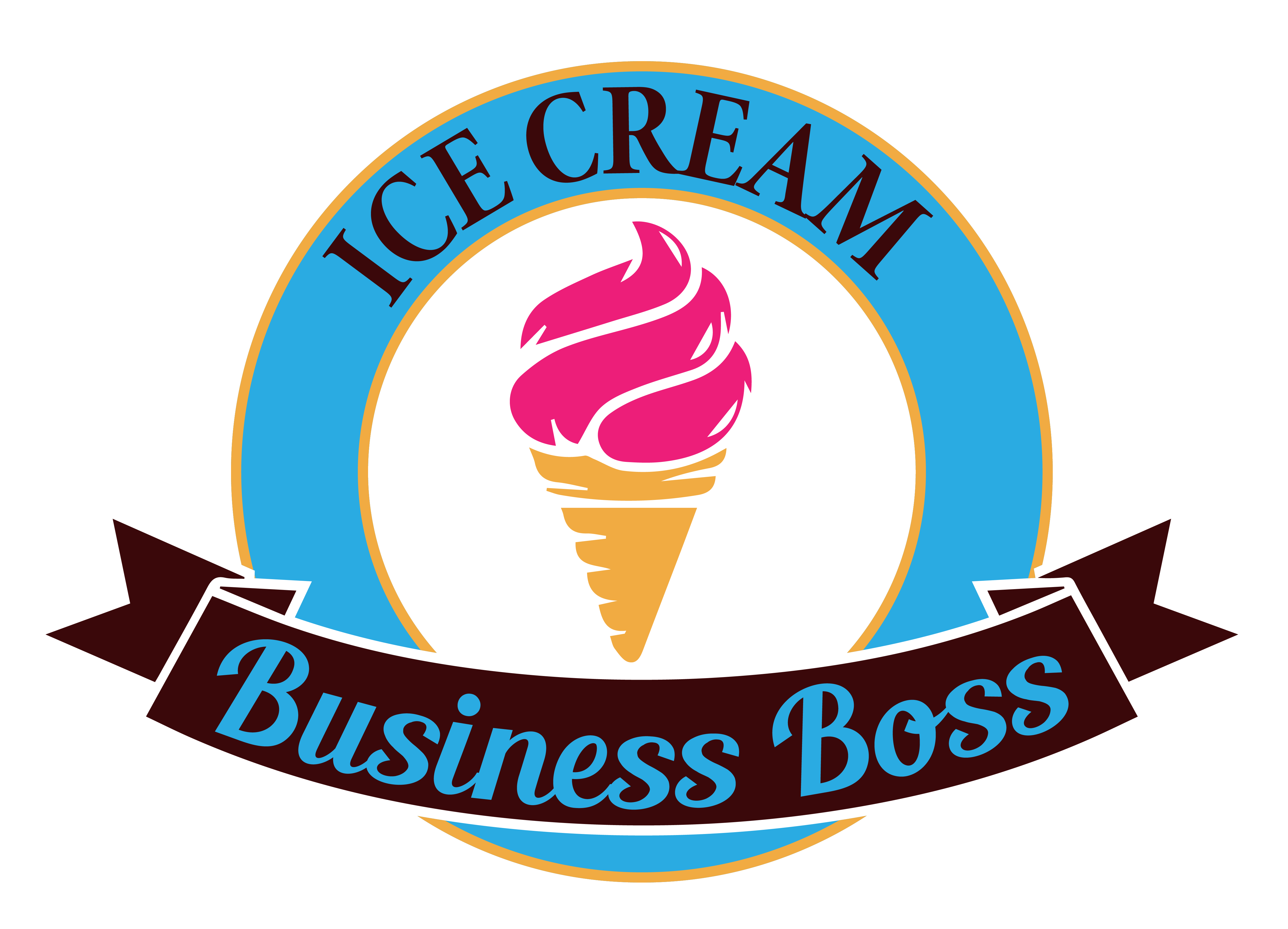Opening your ice cream shop is a dream as sweet as a double scoop of your favorite flavor on a hot summer day. But, before you begin serving creamy indulgence to eager consumers, you must first devise a well-thought-out strategy – a road map for your sweet trip into the world of frozen desserts.
To create an ice cream parlor business plan template, you should include an executive summary, company description, market analysis, financial projections, and a marketing strategy. These essentials provide a comprehensive overview of your business’s key components.
In this article, we’ll look at the components of an ice cream parlor business plan template. Creating your business plan is an art, much like making the perfect sundae, and we’re here to help you through it one scoop at a time.
The Executive Summary: The Flavorful Introduction
Your business plan’s executive summary should leave a sweet impression and make potential investors or partners yearn for more like the first bite of a mouthwatering ice cream cone. Setting the stage for the rest of your plan, this crucial piece offers a succinct yet compelling insight into your ice cream parlor endeavor.
Your business concept, the very essence of what makes your ice cream shop unique, is at the center of your executive summary. Introduce your unique selling propositions (USPs), and the enticing qualities that set your ice cream shop apart in the crowded frozen dessert market. This is your chance to give readers a taste of what makes your ice cream shop a must-visit location, whether it’s cutting-edge flavors, a beautiful vintage ambiance, or a dedication to using locally sourced, organic ingredients.
Next, incorporate your mission statement, which captures the essence of your company’s values and goals. Describe your devotion to excellence and quality as well as your passion for giving your consumers excellent ice cream experiences. Your vision statement ought to give readers a glimpse of where you envision your parlor going in the future—possibly opening additional locations or becoming a cherished neighborhood gathering place.
Clearly state your short- and long-term objectives for the ice cream shop. Describe the milestones you hope to reach, such as growing your product line, achieving a specific sales increase, or becoming well-known in your neighborhood.
Another important component is the ownership structure. Include a brief description of who owns and operates the parlor, whether you’re a lone entrepreneur, a partnership, or a component of a bigger company. This gives potential investors a sense of security and reveals the leadership’s inner workings.
Emphasize where your ice cream shop is located. Your achievement may be significantly impacted by your geographical decision. Describe why you chose this specific location. Is it near a busy intersection, a must-see landmark, or the center of a bustling community? This information not only demonstrates your strategic thinking but also gives context to the audience who could become a client of your company.
Check out this article to learn where you can find some ice cream shop business plan example.
Company Description: Crafting Your Ice Cream Identity

Readers are invited to enter the sacred space of your ice cream shop in the company description part of your business plan, where the essence of your firm comes to life. Here, you’ll give a thorough account of the history of your parlor, how it got started, and the profound inspiration that sparked its development.
Recount the journey that led to the creation of your ice cream shop. Give readers a look into the inspiration behind this fascinating endeavor by sharing the origin narrative. Was it a treasured family recipe passed down through the decades, a personal love of developing distinctive flavors, or a sincere desire to make your community happy? Readers should identify emotionally and personally with your origin story, which should convey the motivation behind your company.
Draw attention to the guiding principles that direct your ice cream shop’s everyday activities. Make these values a central part of your story, whether it’s a steadfast dedication to high-quality products, an obsession with outstanding customer service, or a commitment to sustainability and eco-friendly procedures. These principles not only characterize your salon but also help stakeholders and clients perceive it.
Explore the specifics of your judicial system. Describe the legal structure under which your ice cream shop is organized, such as sole proprietorship, partnership, limited liability corporation (LLC), or another type. The foundation for ownership and management is established, and this information also reveals your amount of personal obligation and your approach to handling money.
Describe your ice cream shop’s short- and long-term objectives. Specific accomplishments during the first year, including attaining a set level of sales, increasing your menu, or building a devoted customer base, might be included in short-term goals.
Long-term objectives could include aspirations for the following five to ten years, such as branching out into different markets, diversifying your product line, or building a regional or national reputation. Readers will have faith in your abilities to plan for growth and sustainability because of these goals, which show your vision and strategic thinking.
Market Analysis: Satisfying the Cravings of Your Target Audience
A thorough market study adds a layer of richness and depth to your business plan, offering important insights about your potential client base and the competitive landscape, similar to the colorful sprinkles topping an ice cream scoop. In this section, we’ll examine the market analysis in more detail, analyzing its various elements and significance.
Determine your target market first, those people who will happily wait in line at your ice cream shop. Recognize the characteristics of your prospective customers. Who are the local ice cream aficionados?
Are they young families with children, young people looking for a sweet escape, or maybe adults who enjoy artisanal flavors? Investigate their tastes to see if they like time-honored classics, novel flavors, or dietary-specific goodies like dairy-free or low-sugar alternatives. For you to customize your offerings and marketing techniques, you must be aware of the age demographics and purchasing patterns of your target market.
The next crucial phase in your market study is to do a competitive analysis. Look into the ice cream shops that are already in your area and note their advantages and disadvantages. What varieties do they provide, and how does the cost of their products compare to what you might be able to offer? Examine their marketing tactics, customer support, and standing in the neighborhood.
Focus on what makes your ice cream shop different from the competition to stand out. Perhaps it’s your dedication to using organic, locally sourced ingredients that appeal to customers who are concerned about their health.
Perhaps it’s your commitment to creating distinctive, seasonal flavors that pique the interest of intrepid eaters. You may also concentrate on developing a welcoming environment that encourages a sense of community. Highlight these salient features and describe how they set your salon apart in a crowded market by addressing unmet wants or aspirations.
Look for any market inadequacies or openings your ice cream shop might take advantage of. Do any underserved market segments or ice cream options in underserved areas? Finding these opportunities can help you plan your locations and open up unexplored markets.
Financial Projections: Scooping Out the Numbers

The financial projections part of your business plan contains the scoop of cold, hard numbers that give your ice cream parlor company substance and believability. This section, which highlights your company’s income potential and financial viability, is crucial to luring investors and obtaining loans. The significance of developing thorough financial projections, including income statements, cash flow statements, and balance sheets for at least the first three years of operation, will be covered in this section.
The financial predictions serve as a primary road map for the financial development of your company. They let you foresee and make plans for revenue, costs, and profitability over a predetermined time frame. By setting attainable goals and benchmarks with the aid of this forward-looking perspective, you can keep your ice cream shop on the right path to achieving financial growth.
The income statement, commonly known as the profit and loss (P&L) statement, is one of the most important elements of your financial projections. This statement details your anticipated income and costs and paints a clear picture of your net profit or loss. It enables lenders and investors to evaluate the ice cream shop’s potential for profitability.
Another crucial component is the cash flow statement. It keeps track of the money coming into and going out of your company while accounting for finance, investments, and operating costs. You can use this statement to evaluate your cash status at any one time and make sure you have enough money on hand to pay bills and take advantage of opportunities.
A balance sheet provides a snapshot of the financial situation of your ice cream shop at a certain point in time. They display your assets, liabilities, and equity, giving you a full picture of your company’s financial situation. You may assess the solvency and long-term financial viability of your company using balance sheets.
Utilize market analysis and industry benchmarks to produce precise financial estimates. Analyze information on ice cream industry sales trends, pricing tactics, and consumer buying patterns. Utilize this data to calculate your pricing and sales strategy. Project your costs carefully, taking into account everything from employee salaries and ingredient prices to rent and utility costs.
Be sure that your financial forecasts line up with your entire business plan and market research. For instance, your price and revenue estimates should mirror your positioning if you’re going after a premium market with artisanal flavors.
Marketing Strategy: Whipping Up an Effective Promotion Plan
The marketing strategy part of your ice cream parlor business plan is like the tasty toppings that add to the overall flavor of your venture. You describe your strategy for building brand recognition, luring clients, and encouraging loyalty here. Along with describing your pricing plan, marketing tactics, social media presence, potential partnerships, and collaborations, you should also include a schedule for putting these ideas into action.
Creating brand recognition is crucial to start with. Describe the strategy you’ll use to publicize your ice cream shop. This might entail developing an engaging brand narrative that embodies your core beliefs and differentiators, as well as designing a catchy logo and unified visual identity.
To create interest in the neighborhood, think about opening your parlor with a grand opening celebration or a series of tastings. Point out any innovative strategies you intend to use, such as arranging themed nights or working with regional influencers to spread the word.
The next phase is gaining clients, and here is where price strategy is crucial. Justify your price strategy, including whether it is based on competitive pricing, premium pricing for artisanal offerings, or a combination of both. Put a focus on how your price complies with the demands of your target audience and your overall brand positioning.
To reach your audience, you must use advertising techniques. Create a list of your advertising options, including both conventional ones like flyers, billboards, and local print media as well as contemporary digital ones like Google Ads, Facebook advertising, and Instagram promos. Clearly state your advertising budget allotment as well as your anticipated return on investment.
In the modern digital era, a strong social media presence is essential. Describe your social media plan, including the sites you’ll use, how often you’ll publish, and the kind of content you’ll produce. Your audience can be riveted by captivating images of your mouthwatering ice cream concoctions and behind-the-scenes tours of your parlor. Describe how you’ll engage with customers, immediately addressing their questions and concerns to cultivate a strong internet reputation.
Collaborations and partnerships are effective marketing strategies. If you intend to engage with other nearby companies, organizations, or influencers, describe how your ice cream shop will profit from these alliances. Partnerships may increase the legitimacy of your brand, broaden your audience, and increase your reach.
Give a timetable for when your marketing initiatives will be put into action. Create a roadmap for carrying out your marketing strategy by breaking down the tasks, responsibilities, and deadlines. This not only keeps you organized but also shows that you’re serious about making progress for the growth of your ice cream shop.
Frequently Asked Questions

What licenses and licenses are required to open an ice cream parlor?
Typically, different permits and licenses are required to lawfully run an ice cream parlor. These could include a food service establishment permit, health department approvals, a company license, and, in some cases, a food handler’s permit for your employees. Because requirements differ depending on where you live, it’s critical to verify with your local government authorities and health department to ensure compliance.
How much does it cost to open an ice cream parlor?
The cost of opening an ice cream parlor varies greatly depending on aspects such as location, size, and scope of your business. For startup expenses like equipment, leasing or building of the store, permits, inventory, and marketing, you may require $50,000 to $200,000 or more. Your business plan’s financial projections can provide a more precise estimate tailored to your circumstances.
What methods can I use to set my ice cream shop apart from the competition?
Differentiating your ice cream shop from the competition is critical to growth. To create signature offers, consider using unique flavors, high-quality ingredients, and inventive toppings. Focus on providing excellent customer service and creating a friendly environment in your store. Participate in local community activities, collaborations, and social media marketing. In today’s industry, sustainability and eco-friendly activities can also be a differentiation.
The information provided by IceCreamBusinessBoss.com (“The Site”) is for general informational purposes only. All information on the Site is provided in good faith, however, we make no representation or warranty of any kind, express or implied, regarding the accuracy, adequacy, validity, reliability, availability, or completeness of any information on the Site. Under no circumstance shall we have any liability to you for any loss or damage of any kind incurred as a result of the use of the Site or Reliance on any information provided on the Site. Your use of the Site and your reliance on any information on the Site is solely at your own risk. This blog post is for educational purposes only and does not constitute legal advice. Please consult a legal expert to address your specific needs. Terms and Conditions.

Hi! I am Shawn and I am a happy individual who happens to be an entrepreneur. I have owned several types of businesses in my life from a coffee shop to an import and export business to an online review business plus a few more and now I create online ice cream/gelato business resources for those interested in starting new ventures. It’s demanding work but I love it. I do it for those passionate about their business and their goals. That’s why when I meet a ice cream/gelato business owner, I see myself. I know how hard the struggle is to retain clients, find good employees and keep the business growing all while trying to stay competitive.
That’s why I created Ice Cream Business Boss: I want to help ice cream and gelato business owners like you build a thriving business that brings you endless joy and supports your ideal lifestyle.

